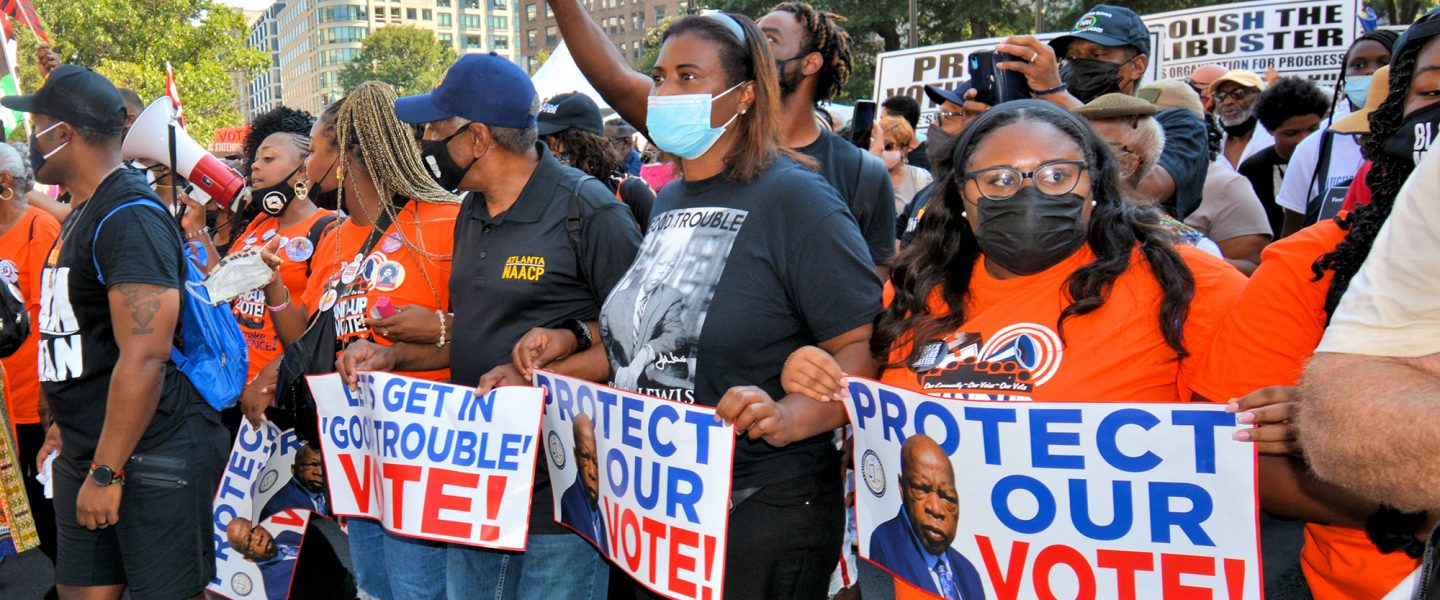Racial Voter Turnout Gap Is on the Rise in US
The turnout gap between white and Black voters, which seemed to be lessening in 2008 and 2012, is again increasing.
|
Listen To This Story
|
If Americans of color had voted at the same rate as white citizens, nearly 10 million additional ballots would have been cast in 2020. This turnout gap is steadily on the rise… likely because of policies that make it more difficult for minorities to vote, especially in parts of the country with a history of discrimination, according to a new study.
“If the United States wants to make good on its foundational claims of a democratic system of governance open to all citizens, it must find ways to close the racial turnout gap,” the study, conducted by the Brennan Center for Justice, concluded. “Wider now than at any point in at least the past 16 years, the gap costs millions of votes from Americans of color all around the country.”
To demonstrate the potential impact of this gap, the researchers state that, if it had not existed in the last presidential election, an additional 9 million ballots would have been cast. That is a figure exceeding President Joe Biden’s margin of victory in the popular vote of 7 million votes.
In nearly two-thirds of all states, the number of these “lost” votes surpassed the margin of victory.
The researchers identified the Supreme Court’s Shelby County v. Holder decision as a big reason why this gap is growing. Much criticized by voting rights activists, it did away with the so-called “preclearance” provision that required federal authorities to sign off on any changes to voting laws in areas with a history of racial discrimination. In these parts of the country, the racial gap is now increasing more quickly than elsewhere.
“With the federal government unable to protect the political rights of people of color using the full power of the Voting Rights Act, the laws and practices that would have been subject to preclearance continue to accumulate,” the report stated.
As part of its reasoning for voiding the preclearance requirement at the time, the court’s conservative majority cited the diminishing racial gap in 2008 and 2012. However, the researchers argue that this is cherry-picked and misleading data because, in those elections, Barack Obama headed the Democratic ticket. It was the first time that a Black man was the nominee for one of the major parties, and that led to a surge in minority votes.
Since then, the turnout gap has been steadily on the rise again… and it cannot be explained by socio-economic factors alone. Less affluent Americans generally tend to vote at a lower rate. One of the reasons is that they simply can’t afford to make the time to cast their ballots.
While these trends are troubling, the experts at the Brennan Center also identified a solution: Congress should pass the John R. Lewis Voting Rights Advancement Act “to update and restore the preclearance regime for the 21st century.”
However, with Republicans in charge of the House and able to block this legislation in the Senate, that seems more than unlikely.

